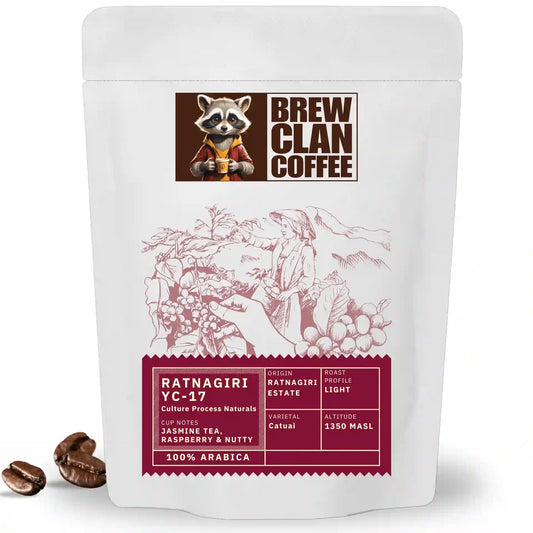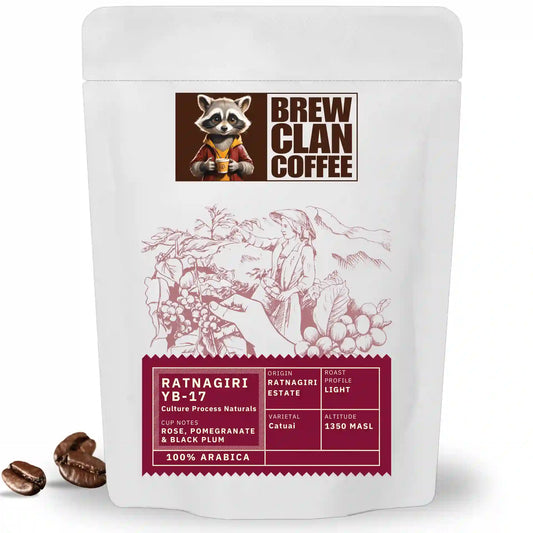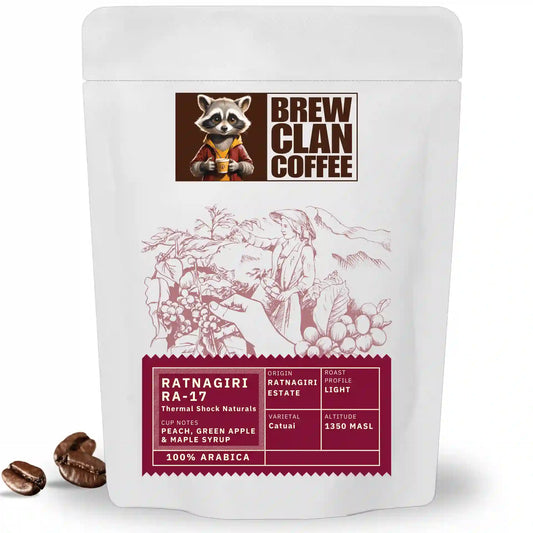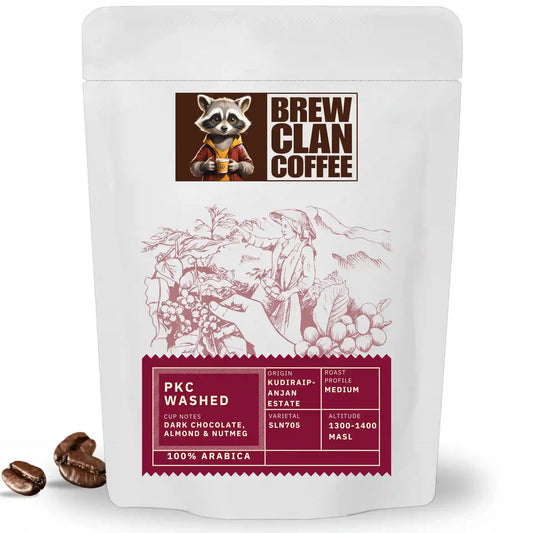
Must-Have Coffee Equipment for Specialty Coffee at Home
Share
There’s something magical about making great coffee at home, that quiet ritual, the aroma, the first sip that hits just right. But if your brews aren’t tasting quite like the ones at your favorite café, don’t blame the beans just yet.
The truth is, good coffee isn’t only about the coffee. It’s also about how you grind it, how you brew it, and the tools you use along the way.
This doesn’t mean you need to spend a fortune or buy every shiny gadget out there. But a few thoughtful pieces of equipment can transform your homemade coffee from “decent” to “damn, that’s good.”

In this guide, we’ll break down the essential coffee tools every home brewer should know about, what they do, why they matter, and how to choose what’s right for you.
Whether you’re just starting out or upgrading your current setup, you’ll walk away with clarity and confidence.
Let’s dive in.
1. Coffee Grinder: The Foundation of Great Flavor
If you buy pre-ground coffee, you’re already starting at a disadvantage, even with great beans.
Why? Because coffee begins to lose its aroma and flavor within minutes of grinding. That means if you’re brewing with stale grounds, you’re missing out on the full depth and complexity your beans have to offer.

Investing in a good grinder is one of the most impactful upgrades you can make in your coffee routine.
Types of Coffee Grinders:
A. Blade Grinder (Entry-Level)
- Uses spinning blades to chop beans unevenly.
- Affordable and compact.
- Drawback: inconsistent grind sizes → uneven extraction → muddy or sharp brews.
- Still works fine for immersion methods like French press or cold brew where precision is less critical.
B. Burr Grinder (Recommended)
- Uses two abrasive surfaces (“burrs”) to crush beans uniformly.
- Provides consistent particle size, which is essential for balanced extraction.
- Comes in two types:
- Flat burrs (more precise, often expensive)
- Conical burrs (more common, great value for home use)
What to Look for in a Grinder (Especially Burr):
- Adjustable grind settings: for switching between methods (e.g., pour over, French press, AeroPress)
- Consistency: even grind = even flavor
- Low RPM or heat build-up: preserves aroma and flavor
- Ease of cleaning: coffee oils and residue can build up fast
A blade grinder is better than nothing, but if you’re serious about flavor, especially with manual brewing, a burr grinder is worth the investment.
2. Brewing Devices: Choose Your Weapon
Now that your beans are freshly ground, it’s time to choose how you’ll brew them. Each method has its own personality, some are clean and bright, others rich and full-bodied.

Let’s walk through the most popular home brewing devices, their flavor profiles, and what kind of coffee lover they’re best suited for.
A. Pour Over (e.g., V60, Chemex)
Flavor Profile: Clean, nuanced, tea-like clarity
Best For: Coffee lovers who enjoy subtle flavors and manual control
Needs: Gooseneck kettle, scale, paper filters
- Offers excellent control over water flow and extraction
- Great for exploring light and medium roasts
- Slight learning curve, but deeply rewarding
B. French Press
Flavor Profile: Full-bodied, rich, with more oils and sediment
Best For: People who like bold, smooth coffee with texture
Needs: Coarse grind, timer (optional)
- No paper filter = more mouthfeel
- Easy to use and very forgiving
- Ideal for medium to dark roasts
C. AeroPress
Flavor Profile: Versatile, can be clean like pour over or strong like espresso
Best For: Tinkerers, travelers, people who like experimenting
Needs: Paper or metal filter, stirring tool, optional scale
- Compact, lightweight, fast brew time
- Can make concentrated shots or mild drip-style coffee
- Great all-rounder with low acidity
D. Moka Pot
Flavor Profile: Intense, concentrated, espresso-style
Best For: Lovers of strong coffee or milk-based drinks like lattes
Needs: Stovetop, fine grind, some attention
- Brews with pressure but not quite espresso
- Best with medium to dark roasts
- Great budget-friendly alternative to espresso machines
E. Drip Coffee Machine
Flavor Profile: Clean, balanced, consistent
Best For: Convenience-seekers and batch brewers
Needs: Filters, medium grind
- Hands-off brewing
- Look for machines that maintain proper water temperature (90–96°C)
- Ideal for households or small offices
F. Cold Brew Maker (or DIY Setup)
Flavor Profile: Smooth, mellow, low-acid
Best For: Cold coffee lovers and make-ahead planners
Needs: Coarse grind, long steeping time
- Can be made using French press, mason jar, or dedicated cold brew gear
- Excellent for sensitive stomachs
- Stays fresh for a week when refrigerated
No single method is “best”. It’s about matching the brew style with your taste, time, and routine.
4. Gooseneck Kettle: Precision in Every Pour
If you’re brewing manually, especially with pour over methods like V60 or Chemex - a gooseneck kettle isn’t optional. It’s essential.

Unlike regular kettles that pour in unpredictable gushes, gooseneck kettles give you precise control over water flow and direction, which directly affects how evenly your coffee bed is saturated.
Why It Matters:
- Even extraction = better flavor
- Allows circular or pulsed pouring, which improves brew consistency
- Prevents channeling or over-extraction in pour overs
What to Look For:
- Thin gooseneck spout: for slow, steady, targeted pouring
- Comfortable handle: should feel balanced, even when full
- Stovetop or electric base: electric versions often include temperature control
- Optional bonus: built-in thermometer or digital temperature setting (ideal if you want to brew consistently at ~92–96°C)
If you’re not doing pour overs, you might not need one, but for manual brewing lovers, a gooseneck kettle is the secret to replicating café-level results.
5. Digital Scale: Accuracy Equals Consistency
This one often surprises beginners, but once you use a scale, you never go back.
Why? Because brewing coffee is part science, and good science starts with accurate measurements.

A digital scale ensures you use the right ratio of coffee to water, every single time.
Why It Matters:
- Volume-based measuring (like scoops or spoons) is wildly inconsistent
- Coffee beans vary in size and density, 1 tablespoon of one roast ≠ 1 tablespoon of another
- Water measurement by ml or g ensures optimal extraction
What to Look For:
- Precision: At least 0.1g accuracy
- Fast response time: So your pour doesn’t outrun the reading
- Tare function: To reset weight with your cup or brewer on the scale
- Water resistance: Helpful in spill-prone brewing setups
- Compact & flat surface: Fits most brewers or mugs easily
A scale is one of the most overlooked upgrades, but also one of the cheapest ways to seriously level up your coffee.
6. Brewing Thermometer (Optional But Helpful)
Water temperature plays a huge role in how your coffee tastes, too hot and you get bitterness, too cool and the brew turns sour or weak. That’s where a brewing thermometer can be a game-changer.

Ideal Brew Range:
90°C to 96°C (195°F to 205°F)
That’s the sweet spot where most coffees extract best.
When a Thermometer Helps:
- If you’re using a stovetop kettle and want to avoid overheating
- When brewing light roasts, which can be more sensitive to water temp
- If you like repeatable, consistent results
What to Look For:
- Quick response time
- Waterproof or steam-resistant probe
- Clip-on or digital readout for ease of use
That said, if you’re using an electric kettle with temp control, you likely won’t need this. But if not, a thermometer can help you dial in your brews like a pro.
7. Coffee Storage: Keeping Your Beans Fresh
Even the best brewing gear won’t help if your beans are stale.
To get the most out of your coffee, store your beans away from light, air, moisture, and heat. That means no fridge, no open jars, and definitely not leaving the bag unsealed.
Ideally, you should:
- Keep them in a resealable, air-tight bag (like the ones we ship at BrewClan)
- Or transfer to a dedicated coffee canister with a one-way valve
💡 Want to go deeper?
Check out our full guide: How to Store Coffee Beans to Keep Them Fresh
8. Descaler or Cleaning Supplies: The Silent Flavor Fix
You can buy the best beans and the best gear… but if your equipment is dirty, your coffee will never taste right.
Coffee oils, micro-grinds, and hard water residue build up fast, especially in drip machines, moka pots, and grinders — and they silently dull your cup over time.

Why Regular Cleaning Matters:
- Improves flavor clarity - no more bitter or “off” notes
- Extends the life of your equipment
- Prevents bacteria or mold (especially in humid conditions)
Essentials to Keep on Hand:
- Grinder brush or dry cloth: For removing stuck grounds and oils
- Descaling solution or vinegar mix: For drip machines and moka pots (monthly or as needed)
- Warm water + mild soap: For daily rinses of non-electric parts
- Avoid harsh detergents: They can leave chemical residues and odors
Think of cleaning as part of the ritual, it protects your gear and your taste buds.
Build Your Setup Based on Your Brew Style
You don’t need to buy everything at once. Start small, build intentionally, and align your setup with how you like your coffee.
Here are three sample home setups to guide your choices:
Beginner Setup (Just Getting Started)
- Blade grinder
- French press or drip coffee machine
- Standard kettle
- Measuring spoon or scoop (until you upgrade to a scale)
Ideal for those who want better coffee than instant or pre-ground, without a big upfront cost.
Balanced Setup (Daily Specialty Coffee, No Fuss)
- Conical burr grinder
- AeroPress or V60 pour over
- Gooseneck kettle
- Digital scale
- Resealable coffee bags or air-tight container
Great for people who brew 1–2 cups daily and want more control + quality.
Flavor-Focused Setup (You’re Ready to Geek Out)
- High-quality burr grinder with multiple settings
- Multiple brewers: V60, French press, cold brew setup
- Electric gooseneck kettle with temp control
- Scale with timer
- Thermometer (optional)
- Dedicated storage canister
Perfect for hobbyists or those chasing café-level precision and variety.
Whatever your setup, remember: good beans + thoughtful brewing = better coffee, every time.
BrewClan Tip: Gear Helps, But Beans Still Come First
The best grinder, the most precise kettle, and the fanciest scale won’t save stale or average beans. At the heart of every great cup is one thing:
✨ Fresh, high-quality coffee.
That’s why at BrewClan, we focus on small-batch roasting and ship only fresh, specialty-grade beans in resealable, degassed bags designed to lock in that just-roasted magic.
So once your gear is in place, do your taste buds a favor Try our beans. Just once.
FAQs - Frequently Asked Questions
1. What equipment do I need to make good coffee at home?
Start with a burr grinder, a manual or drip brewer, a kettle, and a digital scale. These four tools make the biggest difference in brew quality.
2. Do I need a coffee scale to make good coffee?
Yes, if you want consistency. Measuring by weight ensures you’re using the correct coffee-to-water ratio every time.
3. Is a burr grinder better than a blade grinder?
Yes. Burr grinders offer consistent grind size, which improves extraction and flavor. Blade grinders chop unevenly and can lead to bitter or weak brews.
4. Do I need a gooseneck kettle for pour over?
Absolutely. A gooseneck kettle gives you precise control over water flow, which is essential for even extraction in manual brews like V60 or Chemex.
5. Can I use the same equipment for all brew methods?
Some gear is versatile (like a burr grinder), but others are method-specific. For example, a French press and a pour over require different grind sizes and pouring techniques.
6. What’s the easiest brewing method for beginners?
A French press is beginner-friendly and forgiving. Drip machines also work well if you prefer convenience.




